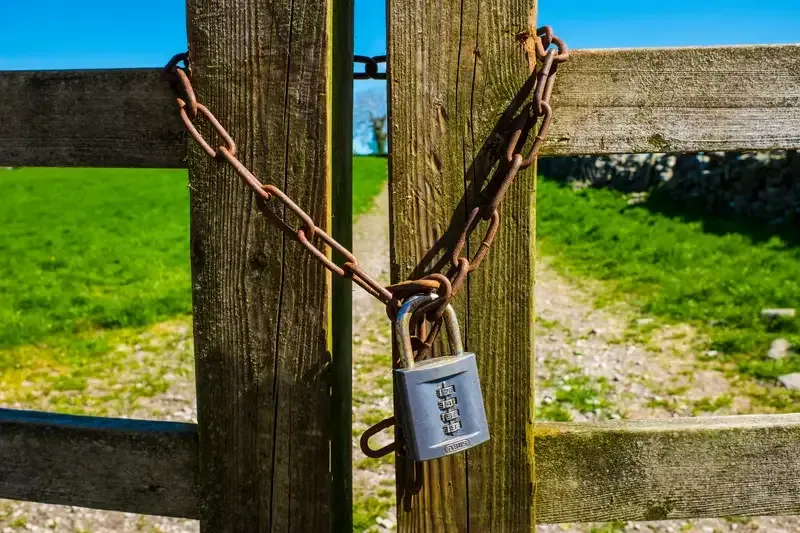
Letting pastures lie fallow
In New Zealand, many lifestyle farmers use rotational grazing to maintain pasture health. However, sometimes a longer, more extended rest is necessary to rejuvenate your paddocks fully. This is where the practice of letting paddocks "lie fallow" comes in; a deliberate strategy that allows grasses to go through their entire life cycle, enrich the soil, and even disrupt the life cycles of common livestock parasites. By implementing a pastoral fallow period, you can improve not only soil fertility but also the overall health of your animals.
What is fallowing?
Fallowing involves leaving a paddock ungrazed for several months, typically from early spring through to autumn (September to April). Unlike the shorter breaks in rotational grazing, fallowing gives the pasture a longer rest period, allowing grasses and legumes to mature, seed, and die back. This cycle enriches the soil, improves its structure, and helps suppress internal parasites that thrive in constantly grazed conditions.
Natural worm control
One of the significant, yet often overlooked, benefits of fallowing is its impact on internal parasites like worms. When paddocks are grazed continuously, livestock are at a higher risk of ingesting parasite larvae, which can reduce their health and productivity. Allowing a paddock to lie fallow for an extended period breaks the parasite life cycle because:
Most internal parasite larvae, such as those causing barber’s pole worm, require the presence of host animals to complete their life cycle. By removing livestock for several months, you starve the larvae of their hosts, leading to a natural decline in their population.
Extended breaks, especially over the hot, dry summer months, expose larvae on the soil surface to sunlight and desiccation, reducing their numbers significantly.
By reducing the parasite burden, your animals will be healthier, require fewer chemical drenches, and have improved weight gains.
This practice can be especially beneficial for lifestyle farmers looking to minimize chemical interventions and support sustainable livestock management.
The science behind fallowing
Studies conducted in New Zealand, particularly in low-fertility hill country areas, have shown that fallowing can have significant benefits for soil and pasture health:
By allowing grasses to mature and die back, the decomposing plant material returns organic matter and nutrients to the soil, increasing its fertility and supporting nitrogen fixation by legumes.
Fallowing encourages deeper root systems, which improve soil structure, water infiltration, and drought resilience.
Research has shown that fallowing can lead to increased legume (eg clover) biomass and nitrogen fixation in the year following the fallow. This not only enhances soil health but also provides more nutritious forage for livestock.
When to fallow
Timing is crucial for a successful fallow. Generally, the best period for letting paddocks lie fallow in New Zealand is from early spring to late autumn (September to April). This extended rest period aligns with the natural growing cycle of grasses, allowing them to set seed and die back naturally:
Spring to autumn is ideal for hill country and areas with higher rainfall. The cooler weather and rain help promote grass growth and soil recovery.
In drier regions, a shorter "mini-fallow" from mid-spring to late summer can help break the parasite cycle while still allowing the paddock to recover.
What to do
If you’re considering letting a paddock lie fallow, here’s how to do it:
Exclude all animals from the paddock to stop grazing and allow grasses to reach full maturity.
During the fallow period, monitor the growth of beneficial plants and grasses. If invasive weeds become a problem, consider spot-treating them.
At the end of the fallow, mob stocking for a short period can help break down accumulated plant matter and stimulate new growth. This should be followed by another short rest before returning to regular grazing.
Why it may not be for you
While the benefits of fallowing are clear, there are some challenges to consider:
Taking a paddock out of rotation for several months can be challenging if grazing space is limited. Plan ahead and adjust your stocking rates to accommodate the loss.
Longer rest periods can allow certain weeds to establish. Regular monitoring and spot treatments can help keep weeds in check.
In regions prone to drought, a shorter fallow period may be more practical to avoid soil erosion and ensure that pastures recover fully once grazing resumes.
Finally
For lifestyle farmers focused on sustainability, fallowing is a powerful tool to improve soil health, increase legume growth, and naturally control parasites. By allowing paddocks to rest longer, you’re not only supporting healthier pastures but also healthier livestock. If integrated thoughtfully with your rotational grazing schedule, fallowing can enhance the resilience and productivity of your block for years to come.
By adopting fallowing, you’re investing in the long-term health and productivity of your land, ensuring a sustainable future for your lifestyle farm. Happy farming!
Our Pasture Management ebook takes an in-depth look at how to maintain productive pasture.

